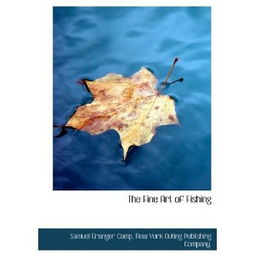Content:
Introduction: Fishing is an enjoyable and relaxing activity that can be enjoyed by people of all ages. One of the most popular types of fishing is using a small fish rod, also known as a "fishing rod" or "bait rod." In this article, we will discuss how to use a small fish rod effectively and provide some valuable fishing techniques to help you catch more fish.
Choosing the Right Small Fish Rod: Before you start fishing, it's essential to choose the right small fish rod. Here are some factors to consider when selecting a fishing rod:
a. Length: The length of the rod should be suitable for the type of fishing you plan to do. For general freshwater fishing, a rod length between 6 to 7 feet is ideal. Longer rods are better for casting, while shorter rods are more suitable for close-range fishing.
b. Action: The action of a fishing rod refers to how it bends when pressure is applied. There are three main types of actions:
- Fast-action: These rods bend towards the tip when pressure is applied, making them great for casting and retrieving lures quickly.
- Medium-action: These rods bend in the middle when pressure is applied, providing a balance between casting and presenting bait.
- Slow-action: These rods bend towards the handle when pressure is applied, allowing for more delicate presentations and better feel for the bait.
c. Power: The power of a fishing rod refers to its ability to handle fish. There are three main types of power:

- Light: These rods are suitable for small fish and delicate baits.
- Medium: These rods are suitable for a wide range of fish species and baits.
- Heavy: These rods are designed for larger fish and heavy-duty baits.
Selecting the Right Fishing Line: The type of fishing line you choose can significantly impact your fishing success. Here are some factors to consider when selecting fishing line:
a. Material: The most common types of fishing line materials are monofilament, fluorocarbon, and braided line. Monofilament is flexible and floats well, fluorocarbon is nearly invisible underwater and has excellent knot strength, while braided line is strong and has low stretch.
b. Diameter: The diameter of the fishing line should be suitable for the rod and the type of fishing you plan to do. Thinner lines are more sensitive and better for detecting subtle bites, while thicker lines are more durable and suitable for larger fish.
Attaching the Line to the Rod: To attach the fishing line to the rod, follow these steps:
a. Thread the line through the rod guides from the tip to the handle. b. Tie a secure knot, such as the improved clinch knot or the palomar knot, to connect the line to the rod's reel seat. c. Spool the line onto the reel, ensuring that the line is tight and evenly distributed.
Choosing the Right Bait or Lure: The type of bait or lure you choose depends on the fish species you're targeting and the fishing conditions. Here are some popular baits and lures:
a. Live bait: Live bait, such as worms, crickets, or minnows, can be highly effective for attracting fish. b. Artificial lures: Artificial lures, such as spinners, spoons, and crankbaits, can mimic the movement of real fish and attract predators. c. Jigs: Jigs are weighted lures that can be fished in various ways, such as straight retrieve, twitching, or hopping.
Casting Techniques: To cast your small fish rod effectively, follow these steps:
a. Hold the rod with a comfortable grip, using your index and middle fingers to control the reel. b. Position the rod tip slightly above the water's surface, and let the line straighten out. c. Swing the rod back and forward, allowing the line to flow through your fingers and form a loop. d. Release the line when the rod is at the desired angle, and let the line fly through the air. e. Retrieve the line by winding it onto the reel, maintaining a steady tension to keep the bait or lure in motion.
Bait Presentation Techniques: To entice fish to bite, it's essential to present your bait or lure effectively. Here are some techniques to consider:
a. Trolling: Dragging your bait or lure through the water at a steady pace can attract fish. b. Still fishing: Letting your bait or lure sit still on the bottom or in the water column can also be effective. c. Jigging: Moving your bait or lure up and down in the water column can mimic the natural movement of prey.
Reading the Water: Understanding the water you're fishing in can help you identify potential fish-holding areas. Look for areas with structure, such as rocks, logs, or vegetation, as these can provide shelter and attract fish.
Conclusion: Using a small fish rod can be a fun and rewarding way to fish. By following these tips and techniques, you'll be well on your way to becoming a skilled angler. Remember to practice patience and enjoy the process, as fishing is all about the experience and the connection with nature. Happy fishing!












